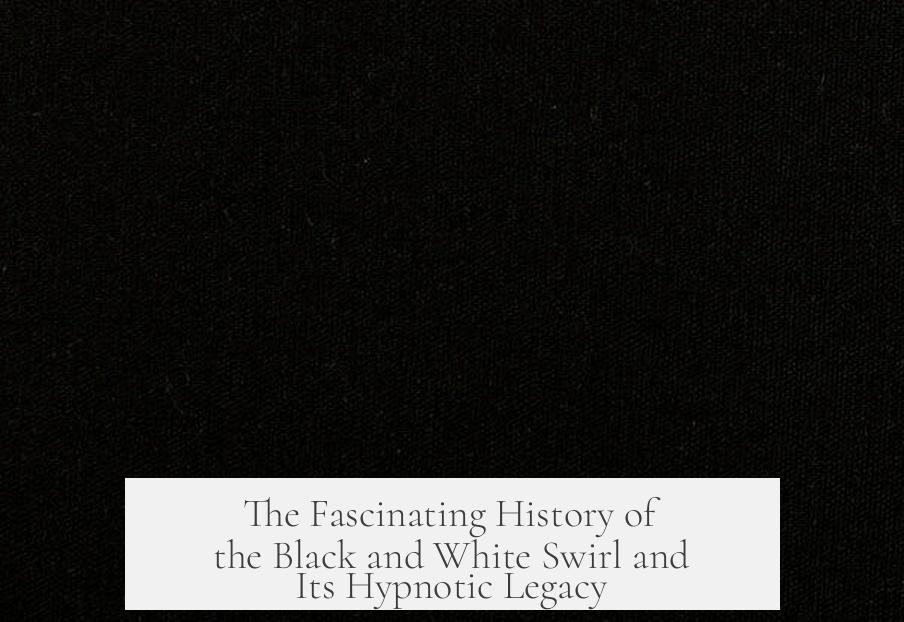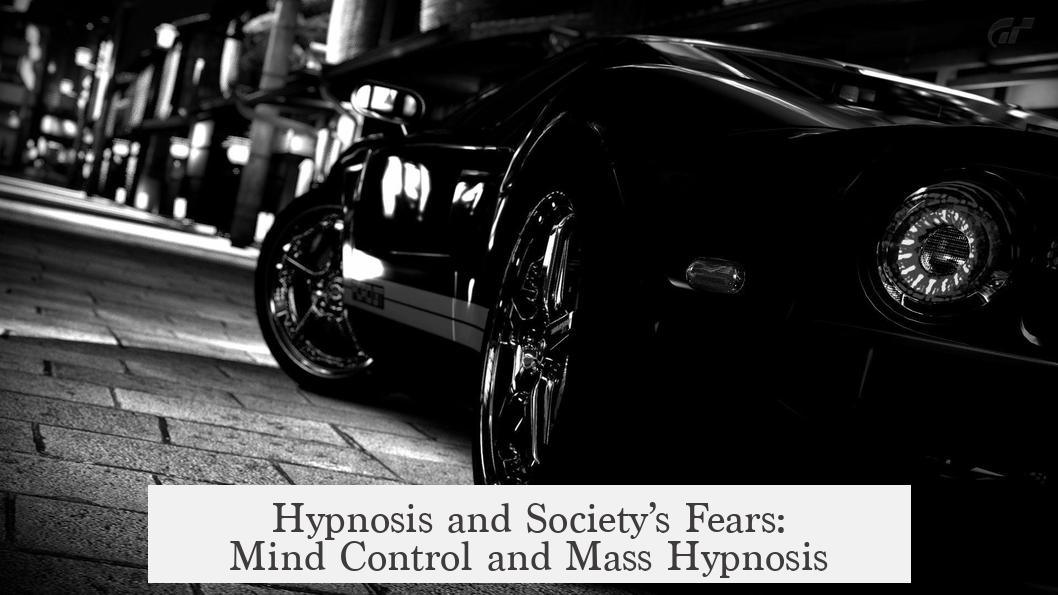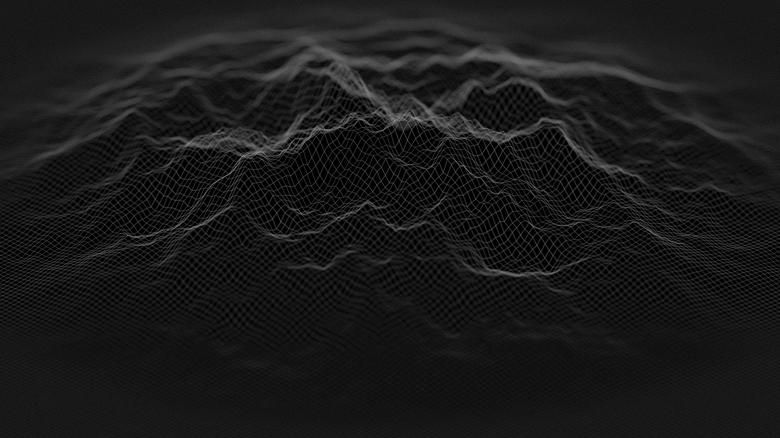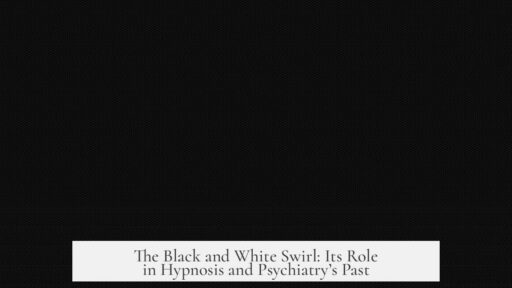The black and white swirl, often called the hypnodisc, became strongly linked to hypnosis mainly through its use in stage performances from the late 1940s. Melvin Powers, a prominent American stage hypnotist, copyrighted a version of this spiral design in 1951 and promoted it as a tool to induce hypnosis quickly. However, despite its popularity in entertainment, the hypnodisc and similar swirl devices were not commonly employed as core tools in legitimate psychiatric treatment.
The hypnodisc produces optical illusions by spinning its black and white spiral, causing eye fatigue and a sensation of being drawn inward. Powers described this effect as helpful for inducing a somnambulistic hypnotic state with suggestions. He noted that people would often fall into deep hypnosis just by staring at the stationary or rotating spiral during his lectures. This device became a staple for stage hypnotists and is frequently seen in fiction to symbolize hypnosis alongside pendulums and swinging watches.
The hypnodisc’s stage use goes back at least to the late 1940s, but its origins tie to earlier medical research on hypnosis from the late 19th and early 20th centuries. Medical pioneers like Jean-Martin Charcot studied hypnosis experimentally and explored devices that moved or flashed colors to facilitate hypnotic states. Charcot’s work at the Salpêtrière Hospital involved creating various optical devices to assess their hypnotic effects.
One example was Jules Luys’ experimentation with rotating mirrors, inspired by trapping devices for birds, to engage patients under hypnosis. In this tradition, there are references to black and white rotating disks similar to the hypnodisc used in some clinical settings. L.W. de Laurence described a hypnotic instrument employed at Charcot’s clinic that was a rotating disk divided into black and white segments. This suggests some exploration of spiral or high-contrast stimuli as hypnosis aids in medical contexts.
Another intriguing historical case involves hypnosis applied to animals. In 1911, Clémencette, a bull-terrier belonging to playwright Edmond Rostand, underwent hypnosis treatments with a white rotating spiral by Professor Hachet-Souplet of the French Institute of Zoological Psychology. The dog was reportedly cured of lethargy after several sessions modeled on human hypnotic techniques. This example provides direct evidence of hypnosis used in a scientific or therapeutic experimental framework, though not necessarily revolving around the hypnodisc as popularized later.
Despite these early medical experiments with hypnosis devices, the hypnodisc itself largely remained within the entertainment domain after the mid-20th century. The concerns about hypnotism’s mass influence grew with the rise of television. From the late 1940s to early 1950s, media outlets in Europe and America expressed fears that televised hypnosis demonstrations, often featuring the hypnodisc, could manipulate public behavior. British hypnotist Douglas James Watson was notably associated with ‘mass hypnosis’ using the hypnodisc during this period, fueling such anxieties.
To summarize the relationship:
- The black and white swirl (hypnodisc) was developed and popularized for stage hypnosis, not clinical psychiatry.
- Its optical effects help induce hypnotic states by causing eye strain and visual fixation.
- Early medical hypnosis research (late 1800s to early 1900s) explored similar devices but did not settle on the hypnodisc as a standard therapeutic tool.
- Jean-Martin Charcot and contemporaries contributed foundational work in hypnosis and experimented with visual stimuli to induce trance states.
- Hypnosis was practiced experimentally in medical and zoological psychology settings, as shown by the 1911 dog case involving hypnosis with a rotating spiral.
- After the 1940s, the hypnodisc became mainly a stage prop and cultural symbol of hypnosis rather than a legitimate psychiatric instrument.
- Public concerns in the mid-20th century arose about hypnosis via television and mass hypnotism, linked to the hypnodisc’s dramatic appearance.
| Aspect | Details |
|---|---|
| Hypnodisc Introduction | Late 1940s stage hypnotism; Melvin Powers copyrighted in 1951 |
| Hypnotic Effect | Spinning spiral causes eye strain and fixation to induce trance |
| Early Medical Hypnosis | Research by Charcot and others applied visual devices for hypnosis |
| Legitimate Psychiatry Use | Visual stimuli used experimentally; not standard clinical tool |
| Animal Hypnosis Example | 1911 hypnosis on Clémencette the dog with rotating spiral |
| Popular Culture | Hypnodisc used widely on stage and in media as hypnosis symbol |
In essence, the black and white swirl symbolizes hypnosis primarily due to its theatrical roots and striking visual properties. While hypnotism has been practiced within psychiatry, the hypnodisc itself was more a tool of showmanship than clinical therapy. Medical hypnosis embraced various visual aids in the late 19th century, but the specific swirl design became iconic because of stage hypnotists and cultural portrayal rather than psychiatric legitimacy.
- The hypnodisc emerged as a stage hypnotism prop post-1940s, patented by Melvin Powers.
- It exploits eye fixation for hypnotic induction but is not a standard psychiatric tool.
- Late 19th and early 20th-century medical hypnotism researched similar devices with variable designs.
- Experimental hypnosis in medicine and zoological psychology showed some use of rotating visual stimuli.
- Hypnosis as a therapy was legitimate but the hypnodisc was primarily entertainment-based.
- Public concerns around hypnotism’s mass effects were associated with the hypnodisc’s popular image.
The Fascinating History of the Black and White Swirl and Its Hypnotic Legacy

What is the history of the black and white swirl’s association with hypnosis, and was it (the swirl or the hypnosis) ever used in ‘legitimate’ psychiatry? The answer: The black and white swirl, formally known as the hypnodisc, is a mid-20th-century invention popularized by stage hypnotists. Its origins trace back even further, to medical research from the late 1800s and early 1900s. Yet, while the swirl captured imaginations and entertainment stages alike, its use in legitimate psychiatry remained quite limited and mostly symbolic—little more than a theatrical prop compared to the scientific hypnosis techniques that preceded it.
Now, let’s unpack that story and dive deep into the spiral’s twisty past—both in science and spectacle.
The Birth of the Hypnodisc: Not Just a Cool Spiral
The spiraling black-and-white disk, affectionately called the hypnodisc or hypno-disc, emerged around the late 1940s. It was not some ancient mystical tool passed down through centuries but rather a relatively modern contraption invented and copyrighted by one Melvin Powers. Powers was an American stage hypnotist who shared his creation in his 1948 book Hypnotism Revealed and even secured a copyright for the design in 1951 under his real name, Melvin Herman Schwartz.
“The spinning spiral produces a series of optical illusions, causing immediate eye strain and fatigue. The subject feels that he is being drawn into a deep, dark, revolving cone. By your suggestions of hypnotic sleep, you can place your subject in a somnambulistic state very easily,” Powers explained. He even noted how a stationary hypnodisc could still lure audience members into self-induced hypnosis during lectures.
So, the hypnodisc is less Jedi mind control and more a clever visual nudge toward focus and relaxation. It exploits optical illusions that tire the eyes, making it easier to slip into a calm, suggestible state—ideal for stage shows.
Hypnosis and Society’s Fears: Mind Control and Mass Hypnosis

Back in the late 1940s and early 1950s, society had a love-hate relationship with hypnosis and its increasingly visible face on television. Some folks worried that hypnotists wielded undue power, potentially controlling masses from their living room sofas. Rumors swirled (pun intended) about hypnotism as a tool for mass manipulation.
French newspapers in 1951, for example, warned of the hypnodisque’s power to hypnotize large groups. Interestingly, these warnings credited British stage hypnotist Douglas James Watson rather than Melvin Powers, highlighting the prop’s quick global rise and the public’s growing fascination—and fear.
Spirals, Pendulums, and the Hypnotic Stage Show
By the 1950s and ’60s, the hypnodisc became a staple, alongside swinging pendulums and shiny watches, whenever fiction and pop culture showcased hypnosis. Whether in talent shows, classroom science fairs (like 14-year-old Alphonse Brogan’s creation in New York) or hypnosis clubs, the spiral disk was the go-to symbol of “hypnotism.”
The black and white swirl quickly evolved past its practical induction of hypnotic states and into the realm of spectacle—an instantly recognizable icon of hypnotic mystery.
Roots in Medical Hypnosis Research: More Than Just Entertainment

But hold on! The hypnodisc didn’t just spring from thin air. Like a good magician revealing their careful setup, medical researchers in the late 19th and early 20th centuries had been exploring hypnotic induction devices for decades. This period saw a blossoming interest in hypnosis as a therapeutic tool with potential for treating neurological and psychological conditions.
One of the leaders in this field was Jean-Martin Charcot, a French neurologist often called the father of modern neurology. At the Salpêtrière Hospital in Paris, Charcot and his students tested various visual tools—rotating disks, flashing lights, and moving colors—to gauge their hypnotic effects on patients.
Take Jules Luys, for example. At Paris’s Charité Hospital, he experimented with rotating mirrors inspired by devices used to trap birds. Another physician described a black and white disk set into rapid motion inside a rubber cylinder used to induce hypnosis at Charcot’s clinic. This early version shared characteristics with what would become the stage hypnodisc decades later.
A Surprising Subject: Hypnosis on a Bull-Terrier
If you think hypnosis was only for humans, prepare for a curveball. In 1911, Clémencette, the female bull-terrier of French playwright Edmond Rostand—yes, the Cyrano de Bergerac author—underwent hypnosis sessions for her laziness and refusal to walk. Professor Hatchet-Souplet used methods modeled on human hypnosis, including a rotating white spiral, to revive her playful spirit. The dog’s recovery highlights early explorations of hypnosis beyond human psychology.
So… Was the Hypnodisc Ever Legitimately Used in Psychiatry?

The quick and honest answer is: not really.
While hypnosis itself enjoyed serious scientific study and some clinical use, the hypnodisc spiral was mostly a prop of theatrics and popular culture. Medical hypnosis relied on more subtle, often conversational techniques rather than flashy spirals. The hypnodisc’s eye-straining swirl mainly served as a quick visual cue to focus attention and facilitate suggestion on stage, rather than a robust medical instrument.
Researchers like Charcot and their successors developed hypnosis as a controlled psychological tool with potential therapeutic uses—some still debated and refined today. Meanwhile, the spiral simply made hypnosis visually iconic but lacked clinical adoption.
What Can We Learn from This Swirling Tale?
- Hypnosis is real, with roots stretching back centuries and serious medical research in psychiatry and neurology.
- The black and white swirl or hypnodisc was popularized by entertainers, not doctors.
- Medical practitioners did experiment with visual devices, but these were varied and more experimental than the simple swirling disk.
- Hypnosis on animals shows its broader potential beyond human theater.
- Popular fears about mass hypnosis highlight the powerful cultural impact imagery like the hypnodisc created.
Practical Tips if You’re Curious About Hypnosis
If you’re tempted to build your own hypnodisc like young Alphonse or want to watch a show, remember the spiral is just an aid—it’s the power of suggestion and focus that really matters. Hypnosis is about relaxing the mind and being open to positive guidance, not a magic trance cast by spiraling patterns.
For therapeutic purposes, seek professionals who use tested techniques and avoid sensational gimmicks.
And next time you see a swinging pendulum or a black-and-white spiral in a movie or show, appreciate its rich, tangled history: from 19th-century hospitals to roaring stage acts. The hypnotic swirl may just be one of the most visually memorable tools in the history of suggestibility—but it’s not quite the mind controller it’s often made out to be.




